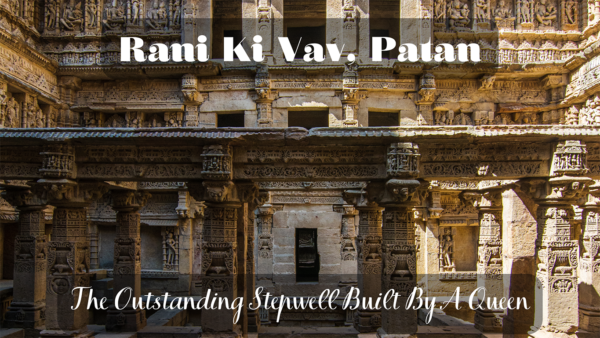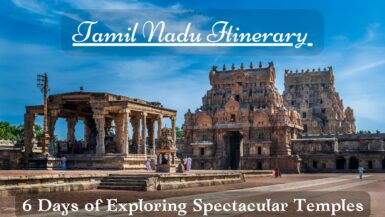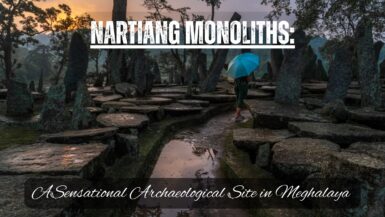The Rani Ki Vav, built by a queen, is truly the queen of stepwells in India. Decked up with extraordinary sculptures, it is the most developed stepwell found in our country. It is an outstanding specimen of the skill of the Chalukyan architects and sculptors. It was declared a nationally protected monument in 1951 and a UNESCO World Heritage Site in 2014. It has also been featured in the INR 100 currency note. The Rani Ki Vav, thus, continues to captivate the visitors as a unique piece of structure and a token of piety as well as a symbol of the love of a widowed queen.
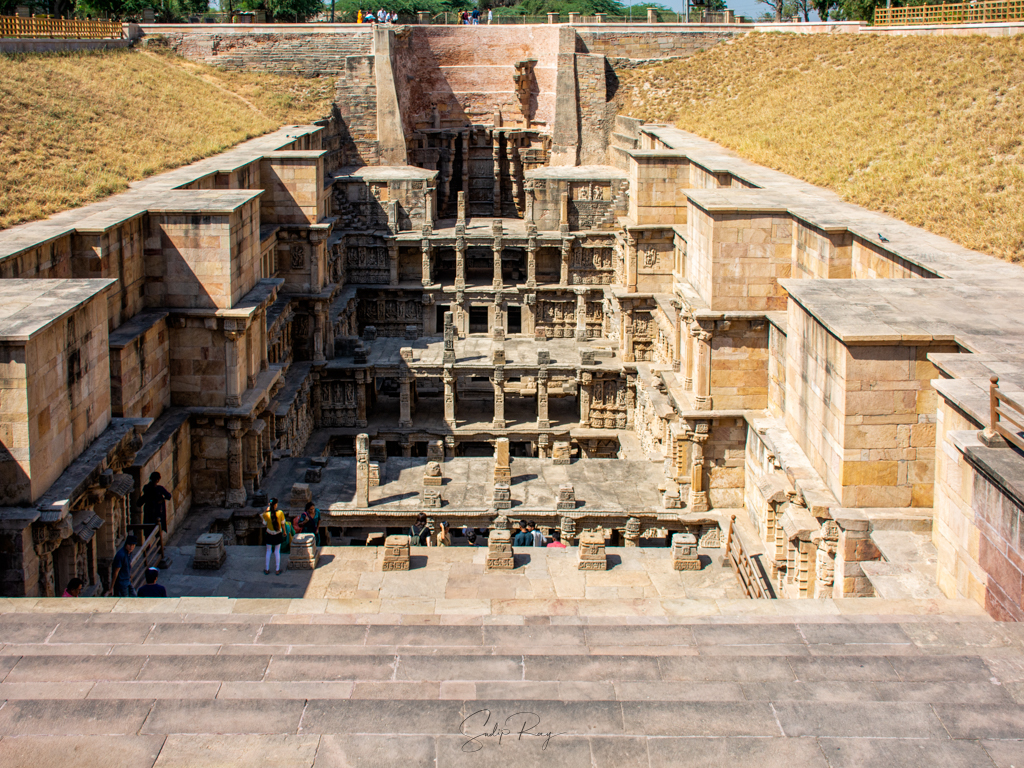
Table of Contents
Why were stepwells built in India:
Stepwells, locally called ‘Vav’ and ‘Baori’, are wells and tanks with steps that descend down to the water level below. In India, the stepwells were built not merely for mundane purposes such as pleasure resorts of royalty. We can analyse them in the larger view of life only by viewing them in Hinduism’s ‘danadharma’ or gift of piety context.
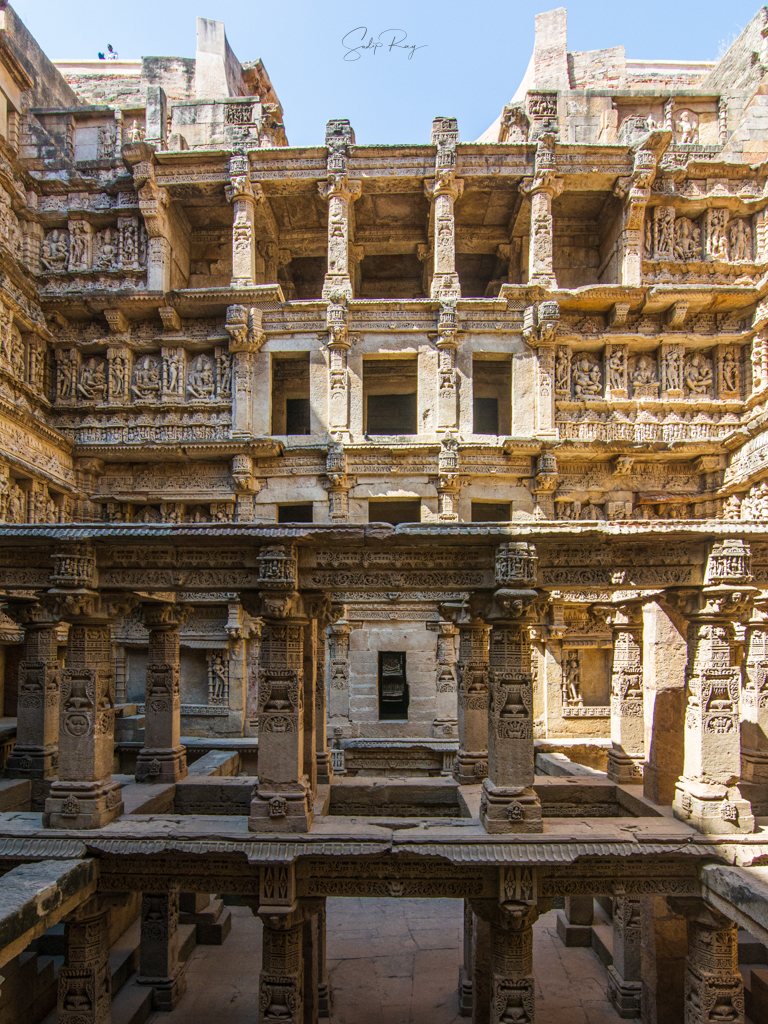
Various religious texts upheld the gift of water as a sacred religious act. In the ‘Puranas’, ‘purta’ is a pious undertaking denoting the building of temples, excavations of tanks and reservoirs, and digging of stepped wells. The Mahabharata championed the charitable act of gifts of lakes and wells. The Vishnusamhita cites that the sins of a person who digs a well and donates water are destroyed and thereby after his own demise attains the world of the water god Varuna. A host of other ‘Dharma Shastras’ affirm that water as a gift of piety releases a person from the cycle of rebirth.
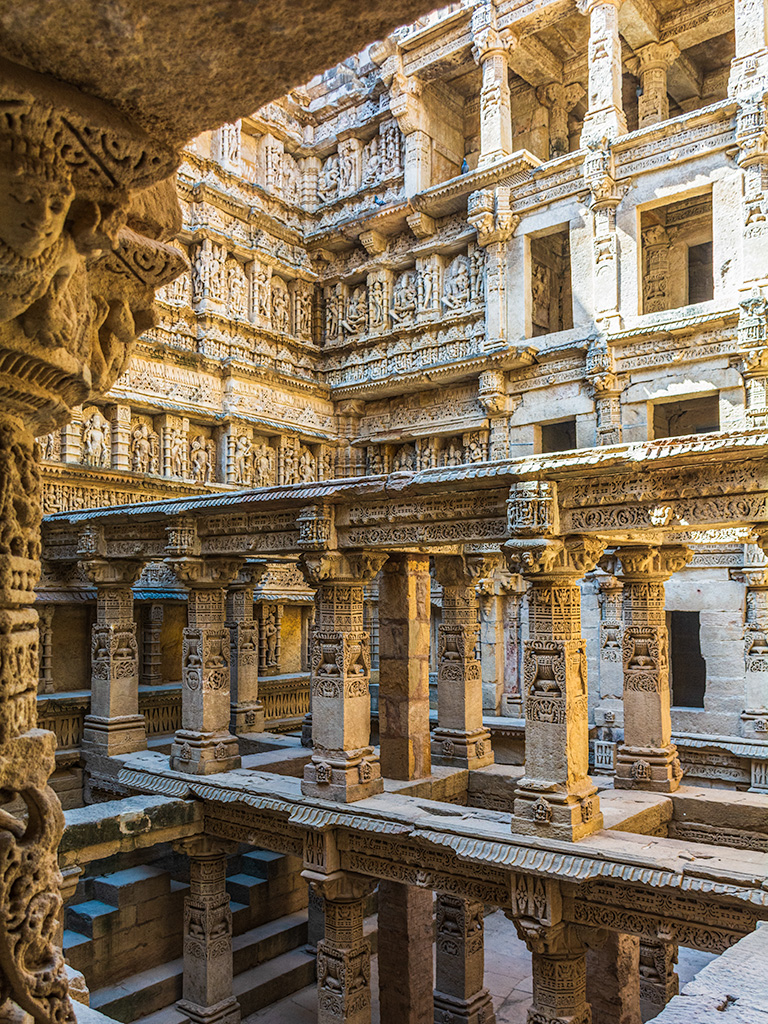
The stepwells in India are mostly concentrated in the western states of Gujarat and Rajasthan, and a handful are found down in the southern state of Karnataka and the Malwa region of Madhya Pradesh. One look at the location of the stepwells reveals that they are situated in semi-arid regions, where rainfall is low and scarcity of water reigns. Hence, the rulers, merchants, and other influential sections of the society built stepwells as ‘lokaprapa’ or ‘public drinking well’ for the well-being of the common folk.
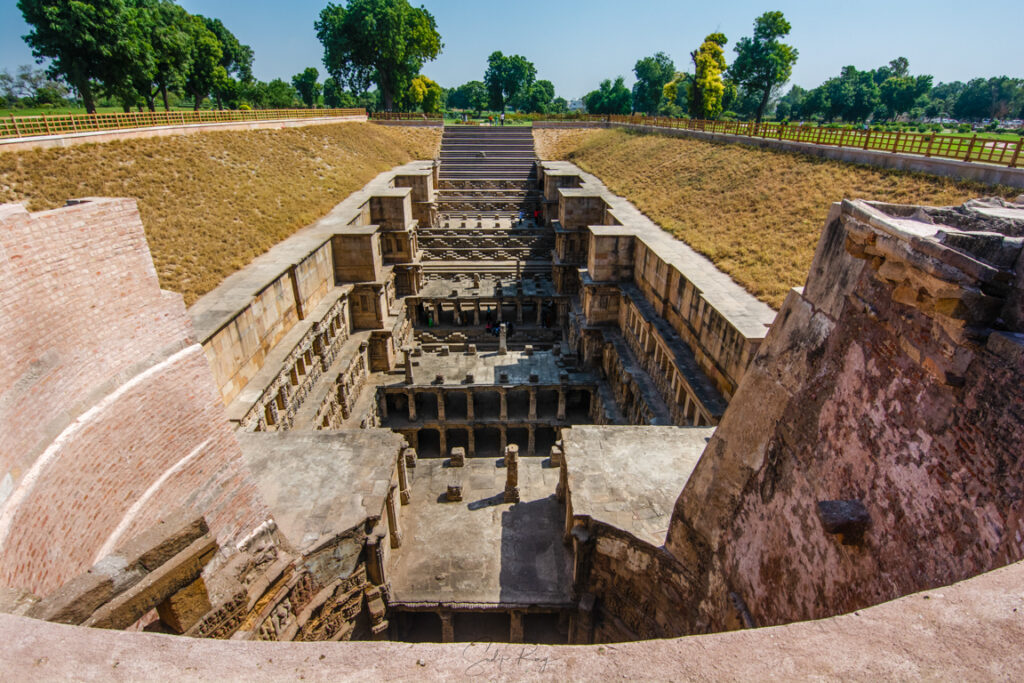
In addition, several such waterbodies are memorial in nature. They were constructed either to commemorate deceased parents or spouses for the benefit of their departed souls. In such cases, the donor of the gift of water is not the beneficiary of the merit, but someone else who is no longer living in the mortal world.
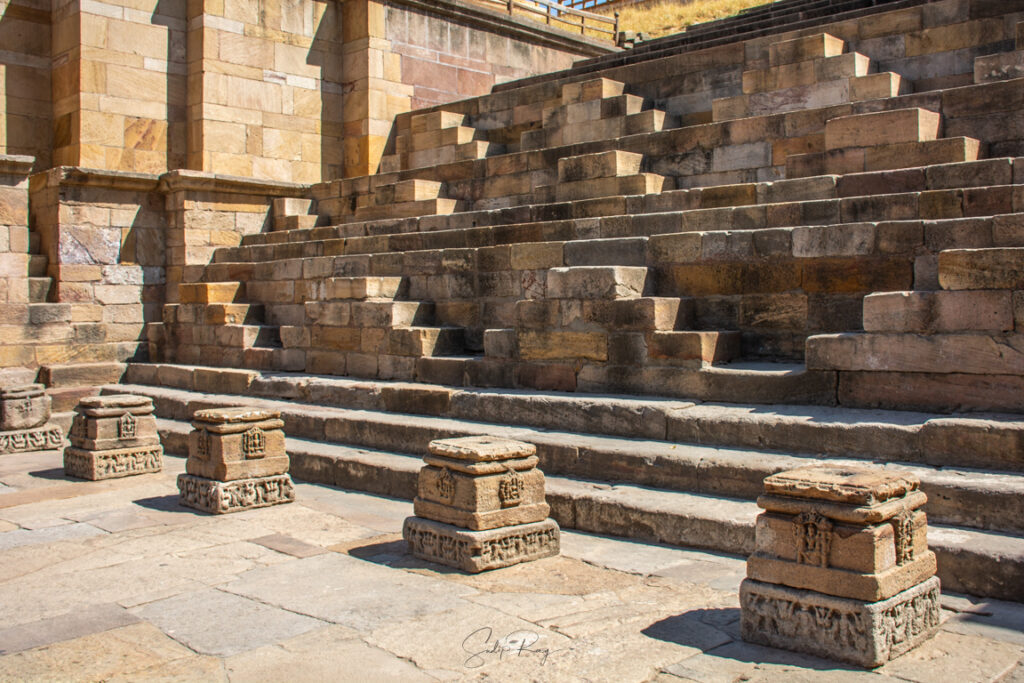
Role of women in building stepwells as a gift of piety:
Interestingly, a large number of stepwells were built by women of means, such as queens, wives of affluent merchants, and courtesans. Such an act was obviously influenced by the sanctions provided in Hindu religious texts, such as the legal commentary of Mitakshara on the Yajnavalkya Smriti. The Mitaksara even allowed widows, whose lives were ruled by severe restrictions, to erect waterbodies for the spiritual benefit of their deceased husbands.
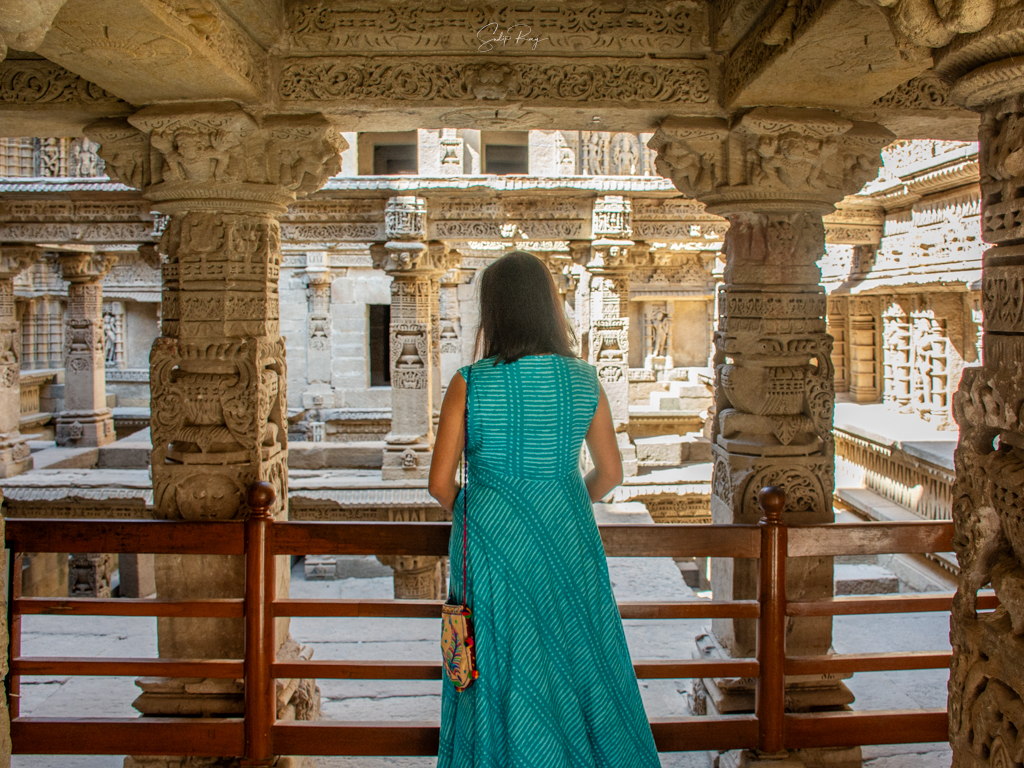
Furthermore, the cult of Mother Goddess was closely associated with waters. There are countless examples where shrines of goddesses were built either within the premises of stepwells or near them. Waterbodies are also regarded as symbols of fertility.
Hence, we find a large number of instances where stepwells were dug thanks to the patronage of women, such as the Adalaj Vav by Queen Ruddadevi, Lahn Vav by Queen Lahini, and Rani Ki Vav by Queen Udayamati.
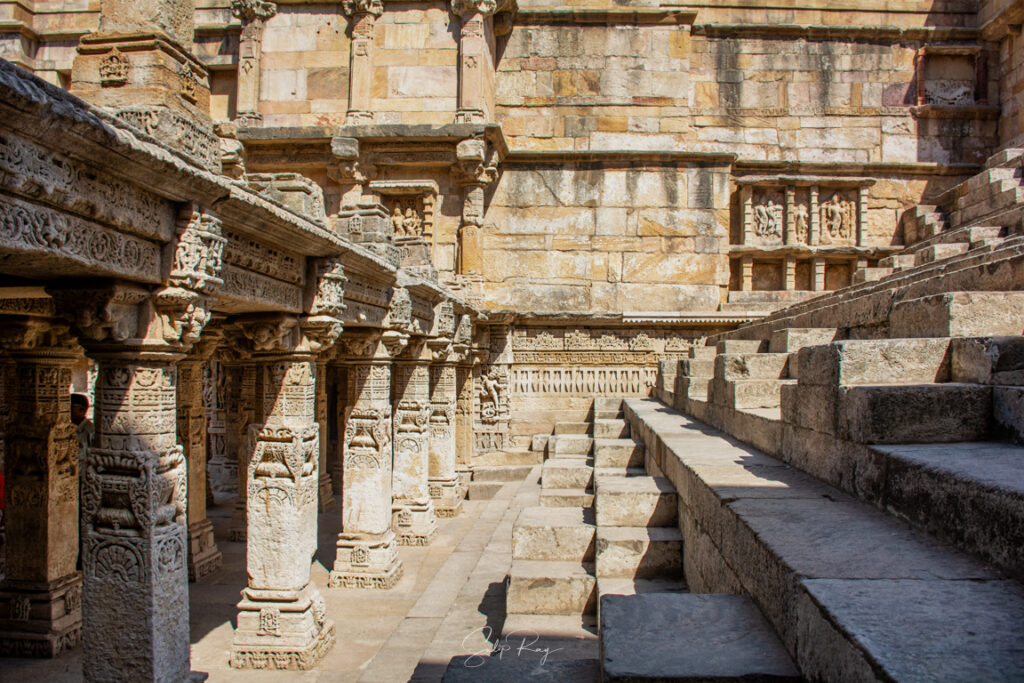
History of Rani Ki Vav:
The Rani Ki Vav of Patan is a prime example of a ‘purta’ act by a widowed queen. It was commissioned by Queen Udayamati as a memorial to her husband, Bhimadeva I, who himself had built the Sun Temple of Modhera.
Built on the bank of Saraswati River, the construction began in 1063 c. CE. It took 20 years to complete the entire work.
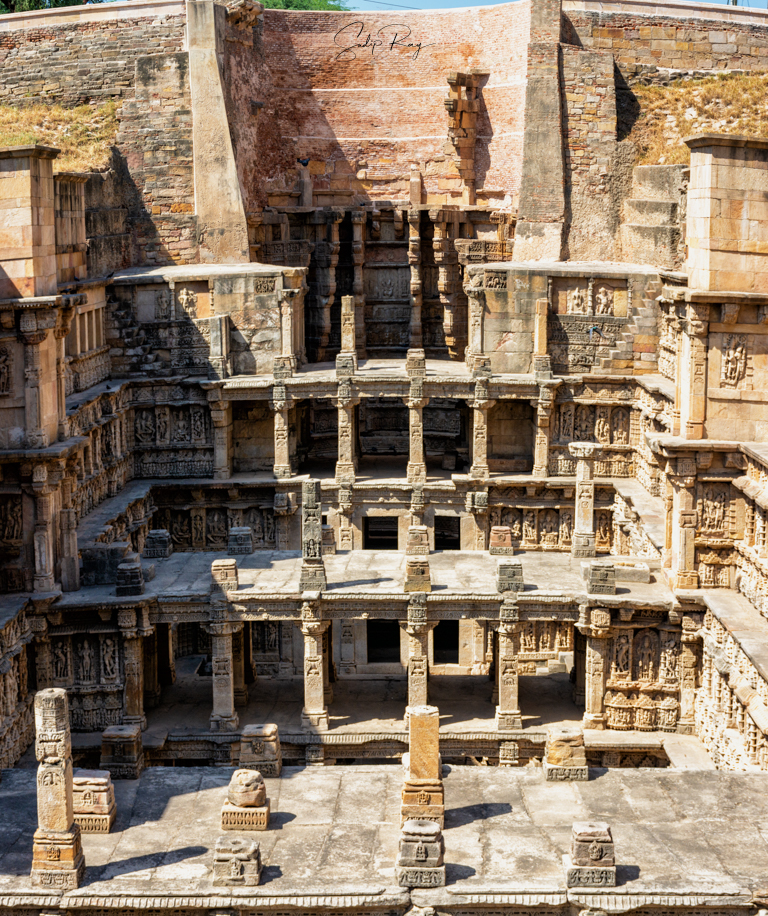
Until 1950, the Rani Ki Vav was virtually unknown as it remained hidden under layers of silt, debris, and earth. Some of its columns were hauled off to build the nearby Bahadur Singh Ki Vav. In mid-1950, the Archaeological Survey of India took the initiative and unearthed the ornately curved stepwell following a herculean work. It is maintained that more archaeological excavations in the area would yield more structures.
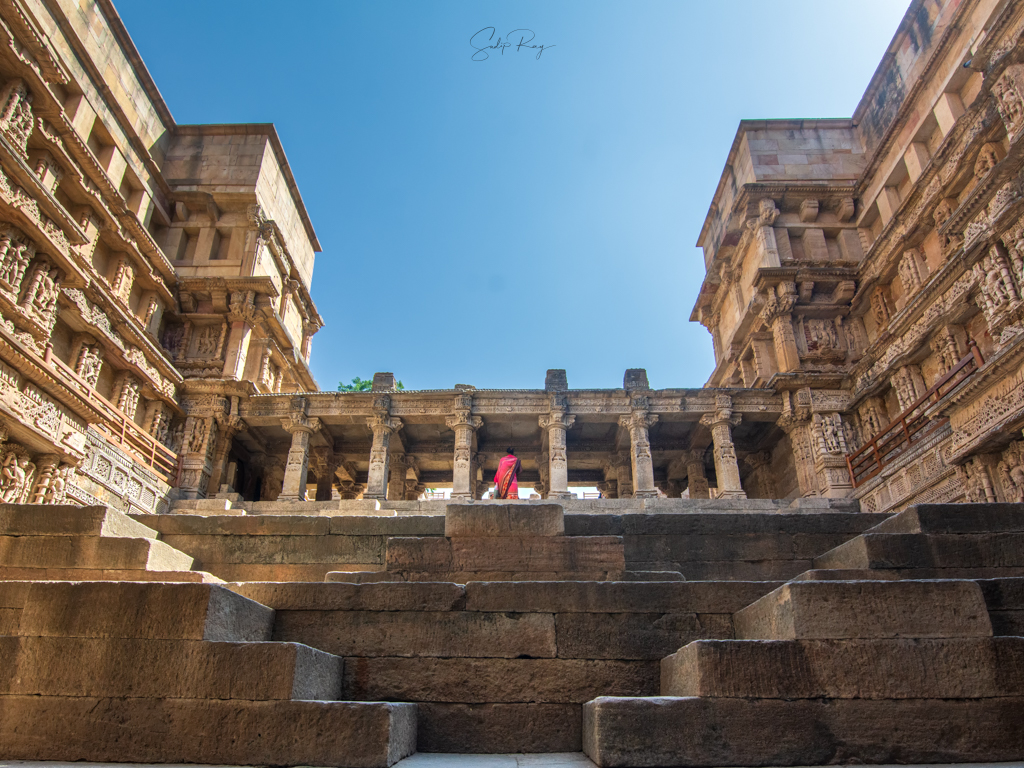
The architecture of Rani Ki Vav:
The Rani Ki Vav is made in Maru Gurjara style. It consists of three main parts – the vertical shaft of the well, a stepped corridor leading from the entrance to the water level, and open, hall-like collonaded pavilions alongside the corridor, with generously carved galleries and chambers surrounding them. Its structure is akin to an inverted temple.
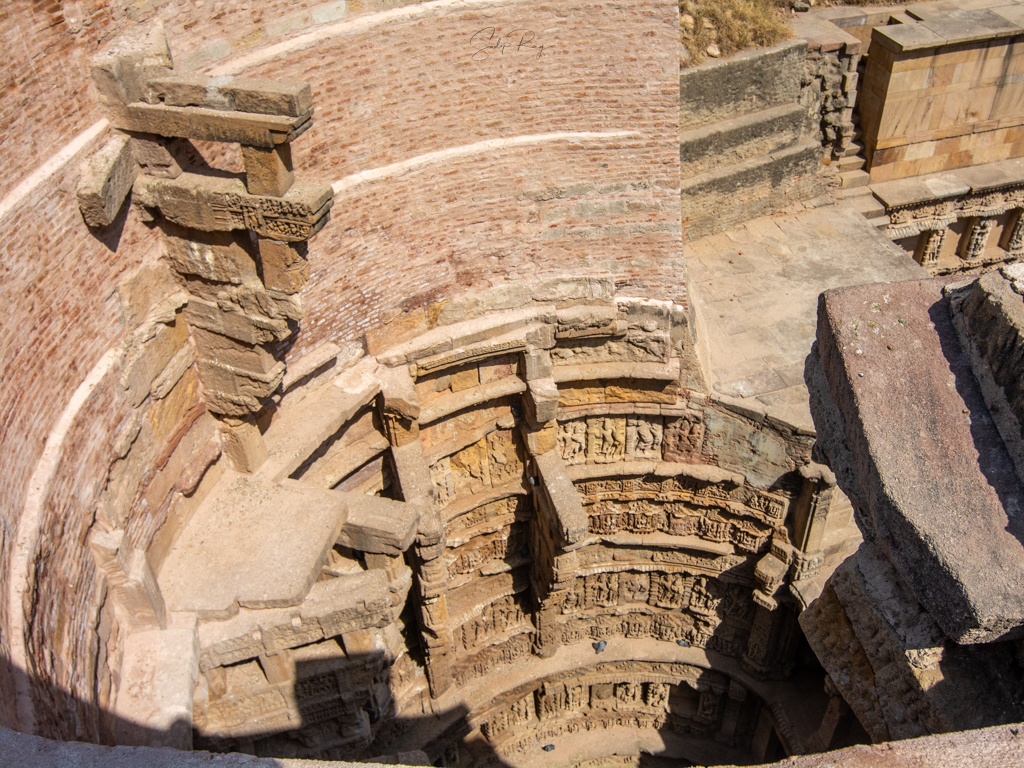
Classified as a ‘nanda’ type of stepwell, it is 65 metres long, 20 metres wide, and 28 metres deep, and decorated with 212 pillars. It faces the east and is divided into seven layers of stairs leading down to a circular well. The four intervening pavilions, which demarcate the stages along the descent, had an increasing number of stories, two, four, six, and seven, with the roof of the top storey of each reaching up to the ground.
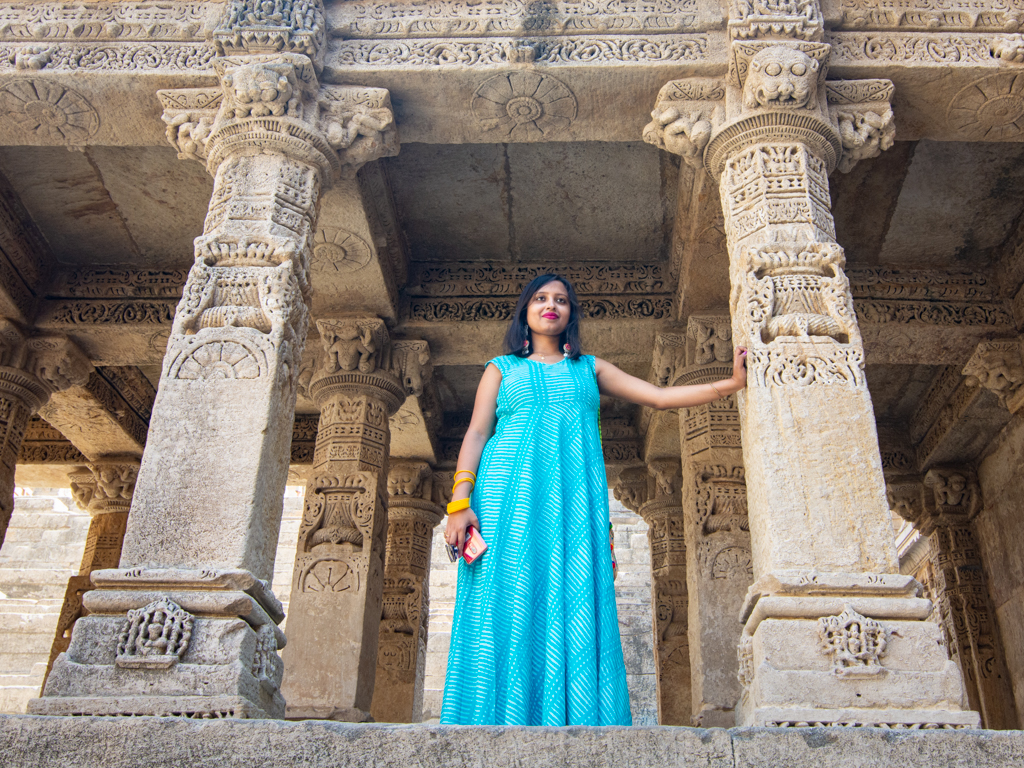
Sculptures of Rani Ki Vav:
The Rani Ki Vav is embellished with intricate carvings. The prolonged underground burial was a blessing for this stepwell, as almost every sculpture has survived in excellent shape. It consists of as many as 500 sculptures in a combination of religious, secular, and symbolic imagery. Major statuary revolves around two sections – one comprising the Hindu deities in the niches, and the second involves figures of ‘apsara’ or celestial nymphs on the upright panels.
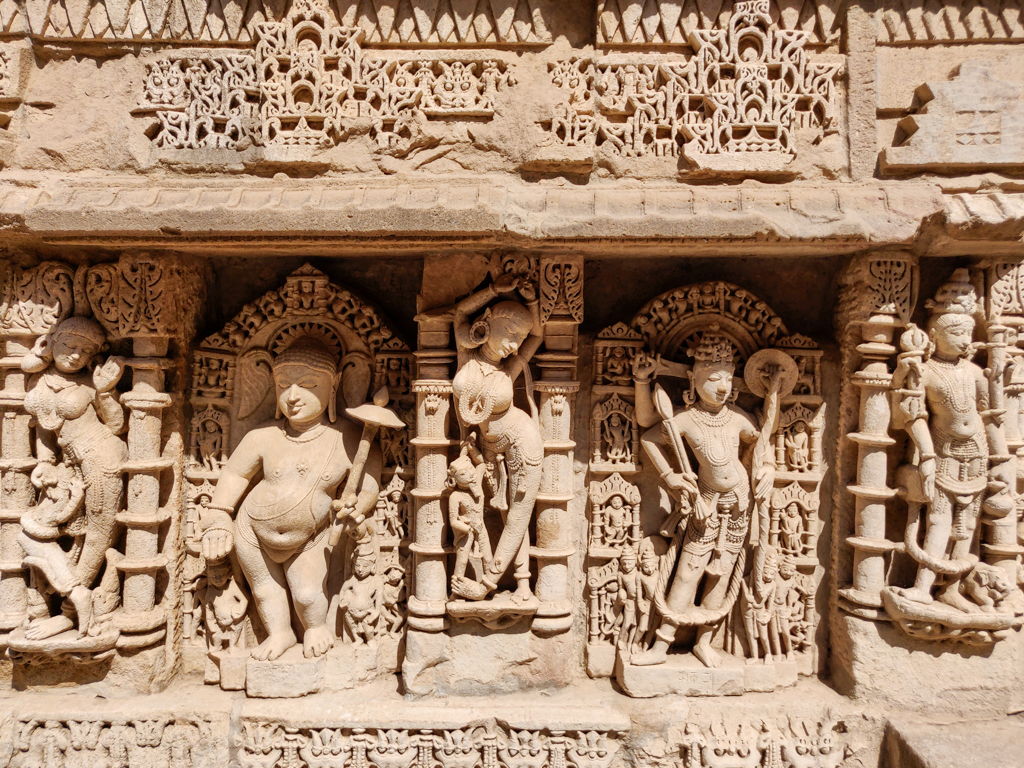
The sculptures of two divinities, Vishnu and Parvati, outnumber all others. Vishnu is intimately associated in Hindu mythology with cosmic waters, and therefore wells, tanks, and reservoirs used to be consecrated to him. Figures of Vishnu sleeping on the cosmic serpent Shesha are found in many important locations inside the Rani Ki Vav. Vishnu’s ‘avatara’ or incarnations also abound. Carvings of Vishnu such as Varaha, Vamana, Rama, Parasurama, Buddha, and Kalki are easily noticeable here.
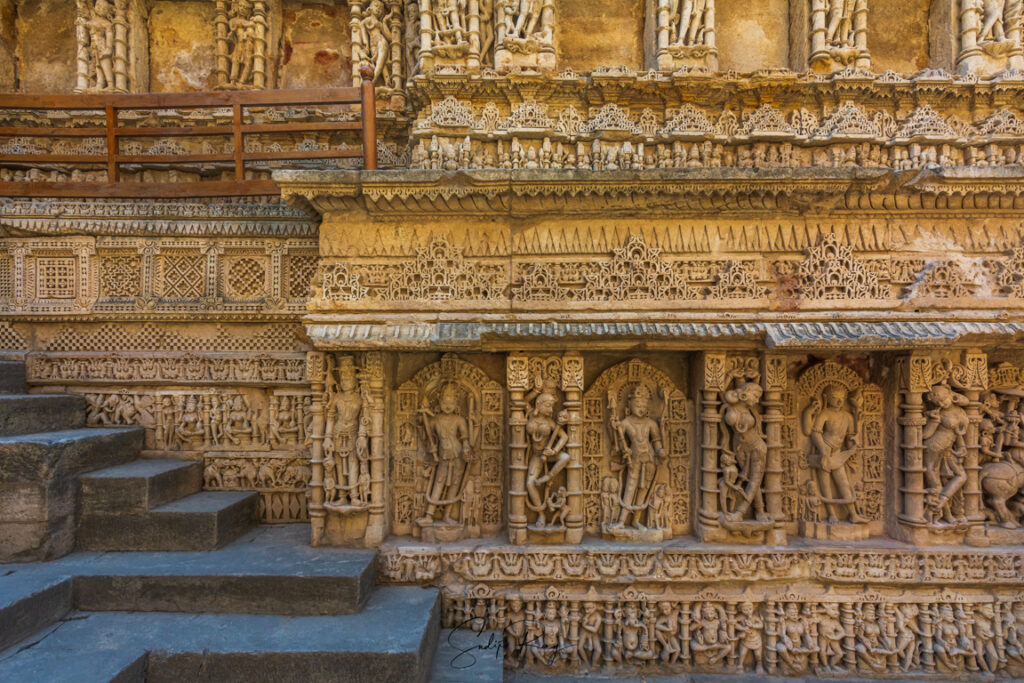
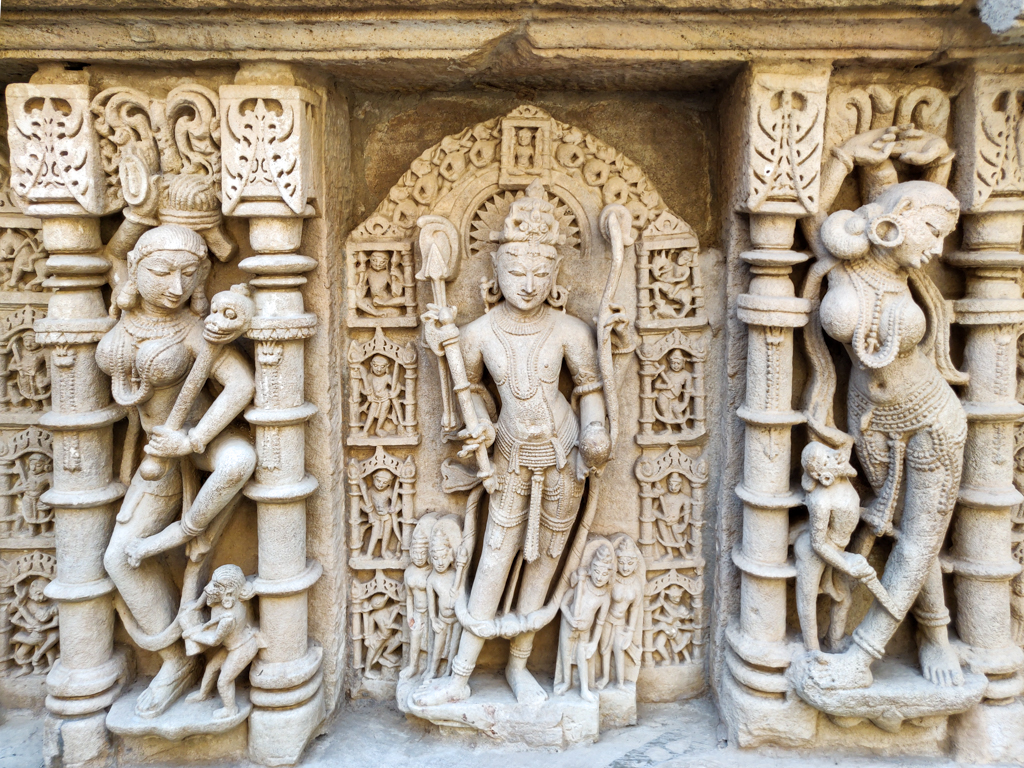
The other major divinity portrayed in Rani Ki Vav is Parvati and her various representations as 12 ‘Gauris’. These representations of the goddess perfectly express Queen Udayamati’s intention to build the stepwell. The images of Parvati in the niches as Uma or Gauri are not just among the hundreds of other figures. Udayamati, in portraying Parvati separated from Shiva and practising austerities for him, was alluding to her own situation, her yearning, and her hope for a reunion with her deceased husband. Just as the goddess performed penance for Shiva, Udayamati built the stepwell for the late king Bhimadeva. Thus, a structural parallel was drawn between the queen and the goddess, and a connection was made between the grief felt on the human plane and the loss the goddess felt on the mythical plane.
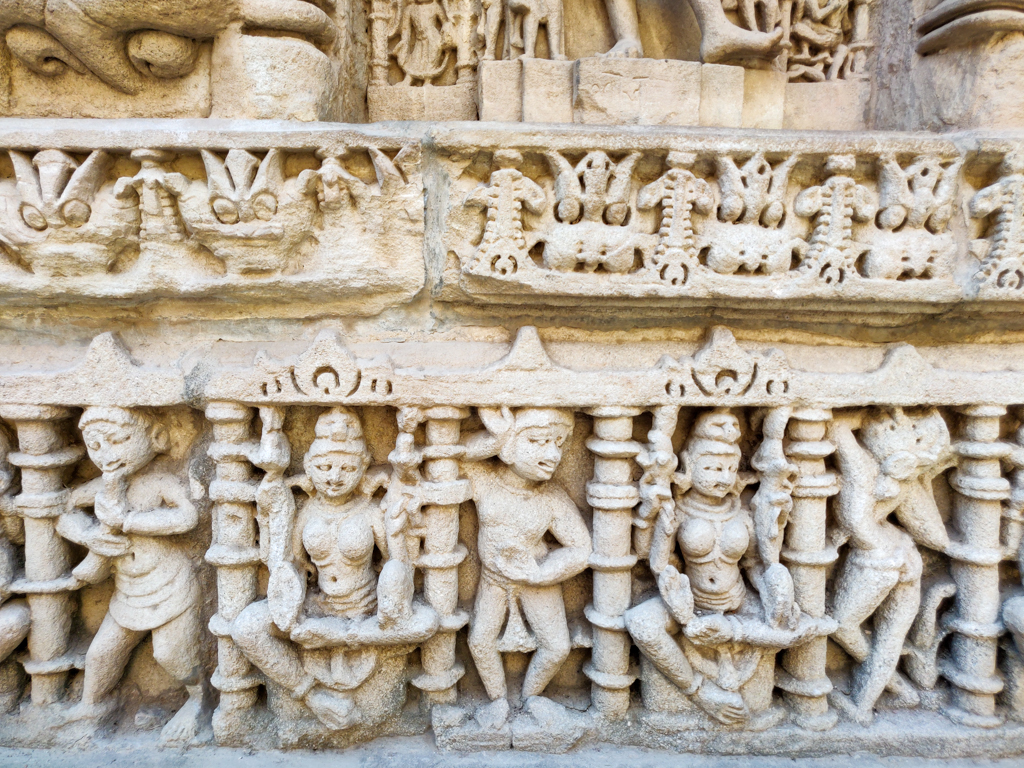
Along with Vishnu and Parvati, there are sculptures of other divine figures and their consorts as well such as Brahma – Saraswati, Shiva – Parvati, and Vishnu – Lakshmi. Also notable are the carvings of the Ashta Vasus in the deepest level of the stepwell, hailing the River Ganga for liberating from the curse.
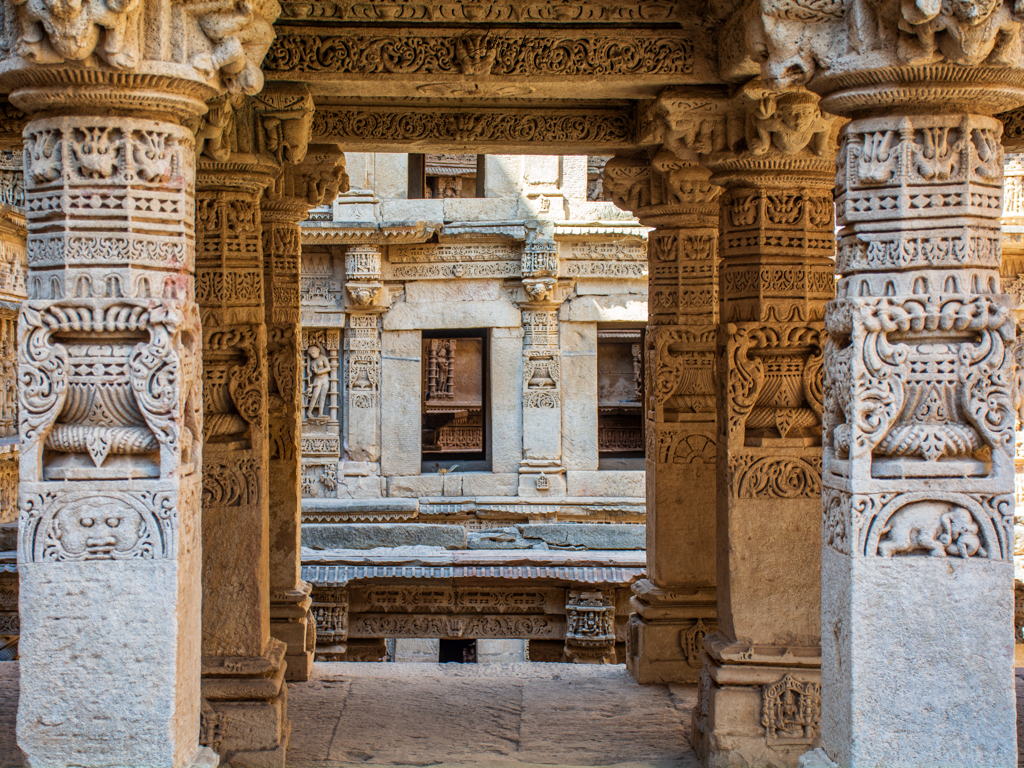
Sculptures of apsaras and Nagakanyas or maidens with snakes are plentiful in Rani Ki Vav, which are obviously symbols of fertility. The female figures are mostly stark naked with snakes crawling over their thighs. They are sometimes accompanied by owls and peacocks. In a few instances, the maidens carry skull caps with fish and snakes sipping from the cup. In addition, along the walls are rows of identically seated goddesses with pitchers and lotuses in their hands. These goddesses are all the rivers of the land.
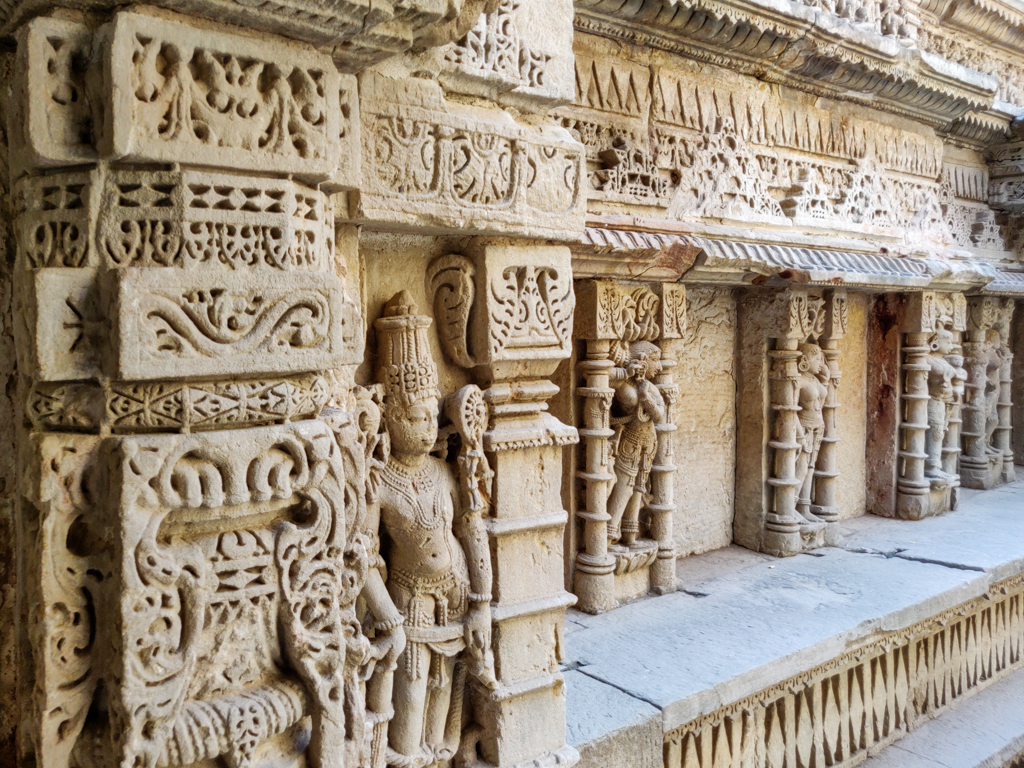
There are also carvings of ‘Kalpavriksha’, Kirtimukha, and Makara on the basements and capitals of pillars. Latticework patterns, resembling the geometric motifs of the local Patola textile, are also found.
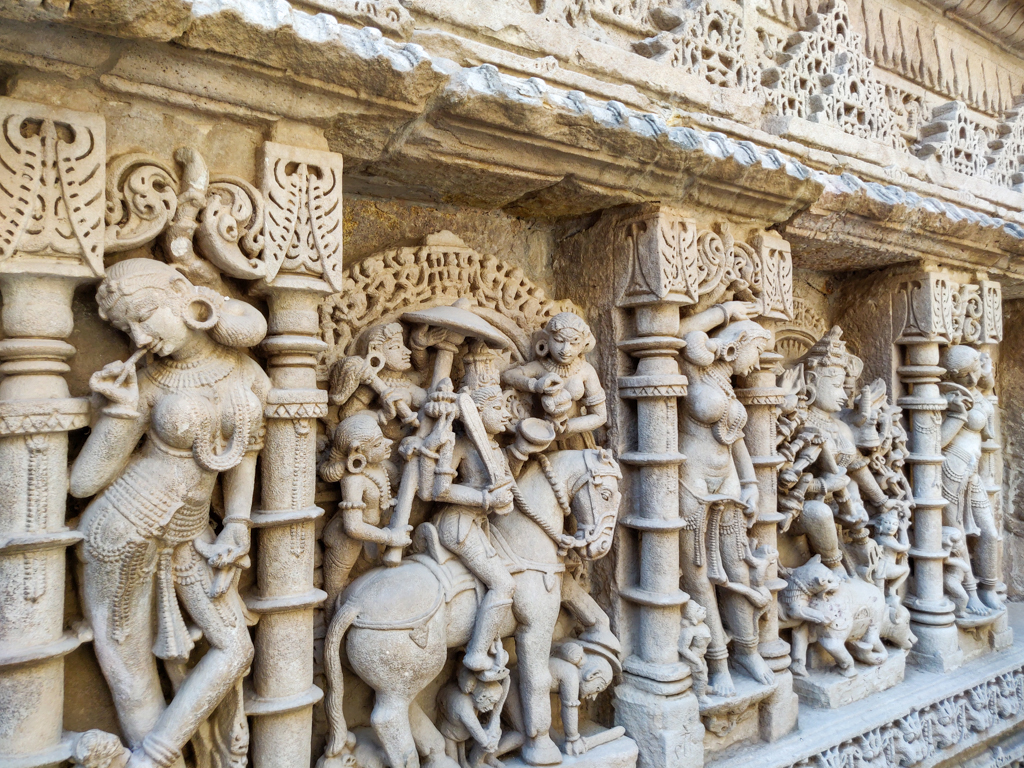
In this way, water as the prime element of life, Vishnu, an entire pantheon of rivers and apsaras finds a place in Udayamati’s memorial.
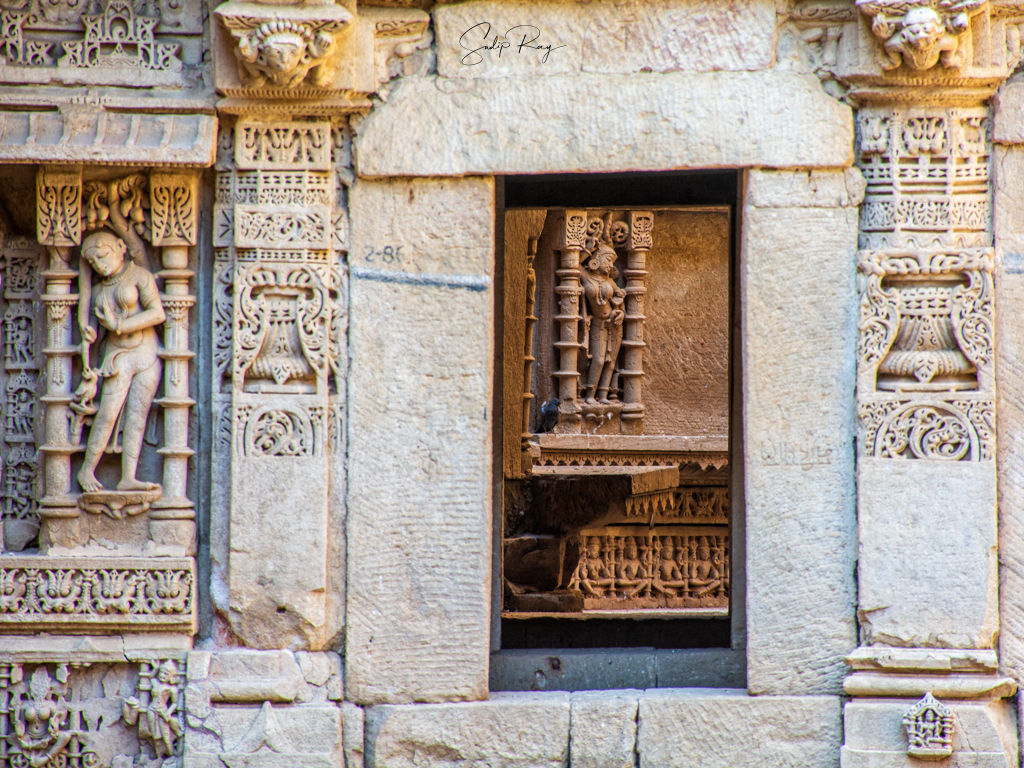
Important FAQs:
Where is the Rani Ki Vav situated?
The Rani Ki Vav is situated in Patan, Gujarat. It is 132 km from Ahmedabad and 117 km from Gandhinagar.
How can I reach Rani Ki Vav?
The nearest airport is Sardar Vallabhbhai Patel International Airport of Ahmedabad. Ahmedabad is well-connected with the rest of India. You can fly in Ahmedabad, and then reach Patan by road or railway.
If you are planning to visit by train, opt for 14820 Jodhpur Intercity Express (from Sabarmati BG station at 6-40 AM) and 14808 Bhagat Ki Kothi SF Express (from Ahmedabad Junction at 9-20 AM). It takes around 2 hours to reach Patan from Ahmedabad via train.
You can also avail of buses operated by Gujarat State Road Transportation Corporation from Ahmedabad. Cars can also be hired from Ahmedabad to reach Patan.
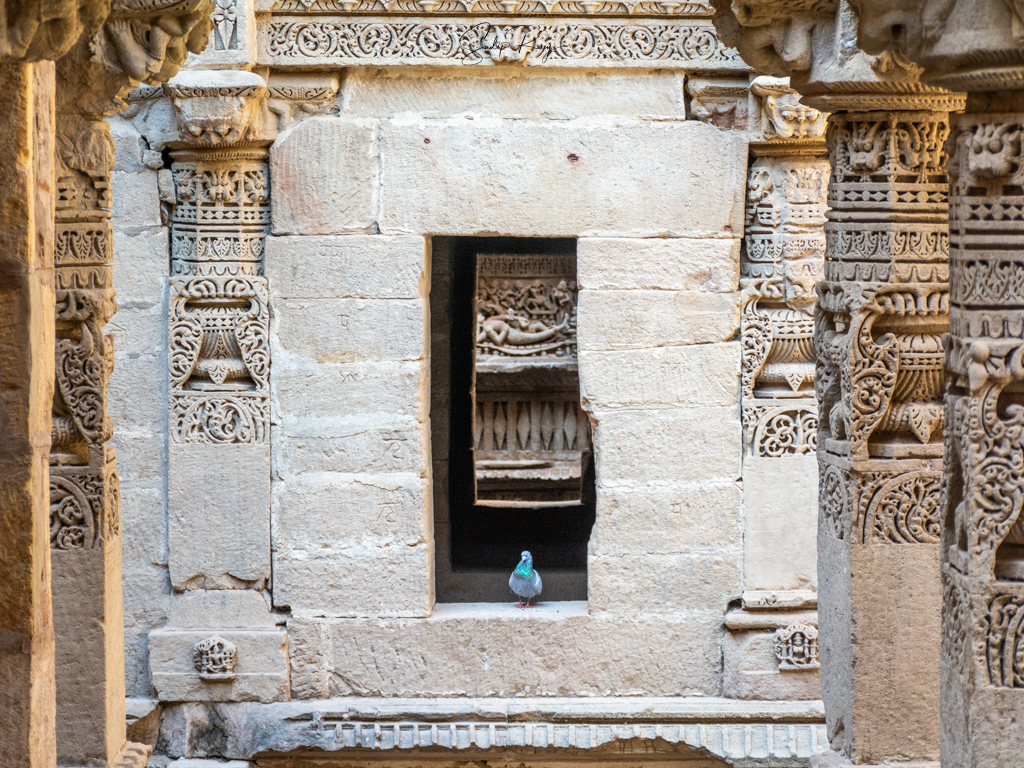
What is the entry fee for Rani Ki Vav?
Entry fee is INR 40 for Indians and INR 600 for foreigners. Tickets can be booked online also.
What are the timings of Rani Ki Vav?
It remains open from 8 AM to 6 PM.
What is the best time for visiting Rani Ki Vav?
October to February is perfect for visiting Rani Ki Vav. Try avoiding the weekends and public holidays to avoid the huge rush of tourists. Also, visit early in the morning both to avoid heat and tourists.
Where can I stay in Patan?
Patan does not have many proper hotels. It is best to stay in Ahmedabad and visit Rani Ki Vav on a day trip.
What are the other nearby attractions?
Visit Modhera’s Sun Temple, Patan City Museum, and Patola Saree-making units.
To plan your next trip to Gujarat, you may refer to our itinerary guide to Gujarat.
